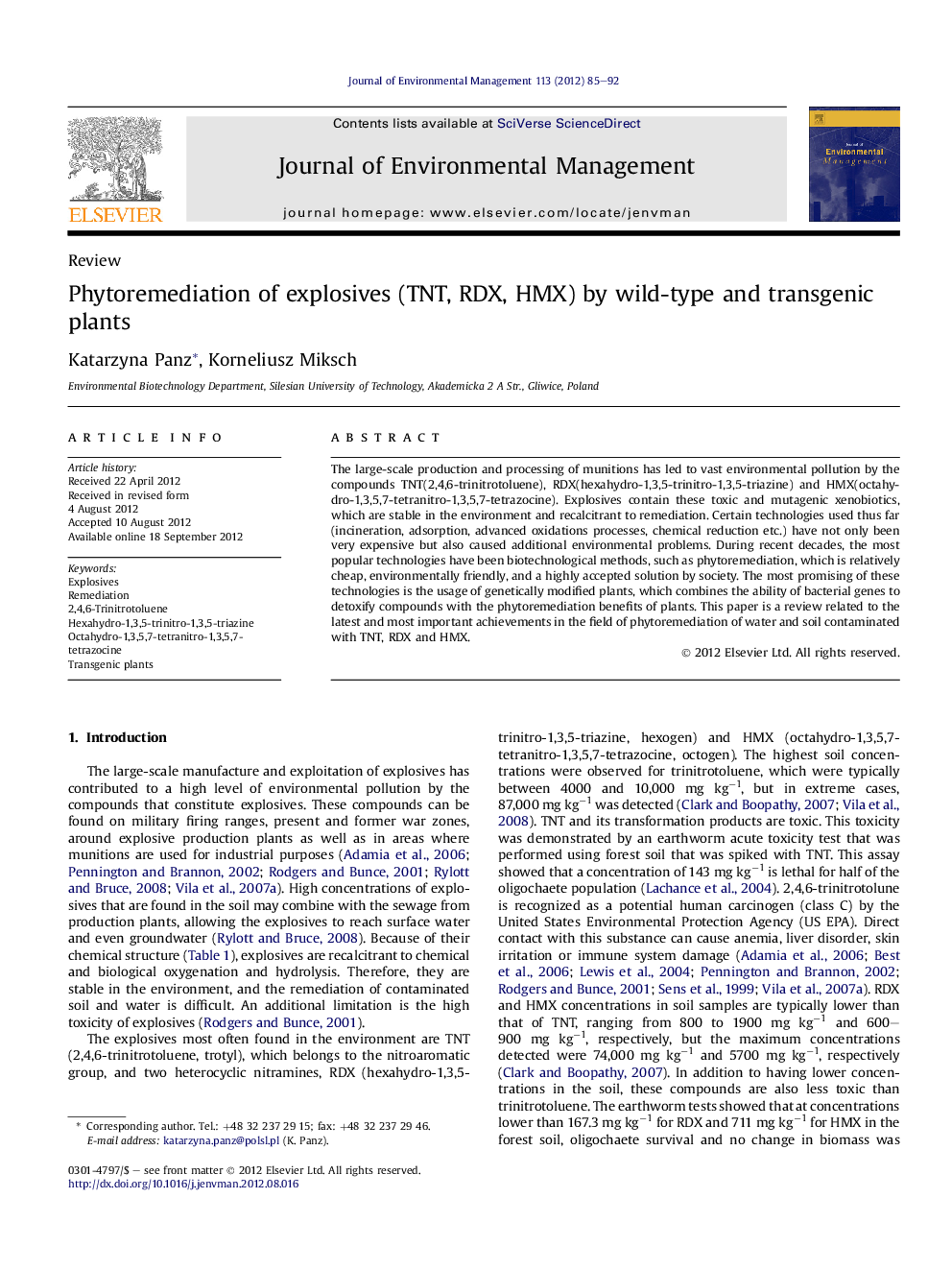| Article ID | Journal | Published Year | Pages | File Type |
|---|---|---|---|---|
| 1056690 | Journal of Environmental Management | 2012 | 8 Pages |
The large-scale production and processing of munitions has led to vast environmental pollution by the compounds TNT(2,4,6-trinitrotoluene), RDX(hexahydro-1,3,5-trinitro-1,3,5-triazine) and HMX(octahydro-1,3,5,7-tetranitro-1,3,5,7-tetrazocine). Explosives contain these toxic and mutagenic xenobiotics, which are stable in the environment and recalcitrant to remediation. Certain technologies used thus far (incineration, adsorption, advanced oxidations processes, chemical reduction etc.) have not only been very expensive but also caused additional environmental problems. During recent decades, the most popular technologies have been biotechnological methods, such as phytoremediation, which is relatively cheap, environmentally friendly, and a highly accepted solution by society. The most promising of these technologies is the usage of genetically modified plants, which combines the ability of bacterial genes to detoxify compounds with the phytoremediation benefits of plants. This paper is a review related to the latest and most important achievements in the field of phytoremediation of water and soil contaminated with TNT, RDX and HMX.
► Explosives materials are toxic and recalcitrant xenobiotics found in different environments. ► 2,4,6-trinitrotoluene is easily transformed in different plant roots, but is highly toxic. ► RDX and HMX are not degraded in plants tissues, but they are accumulated in aerial parts of plants. ► Transgenic plants combines the ability of bacterial genes to detoxify compounds with the phytoremediation benefits of plants.
